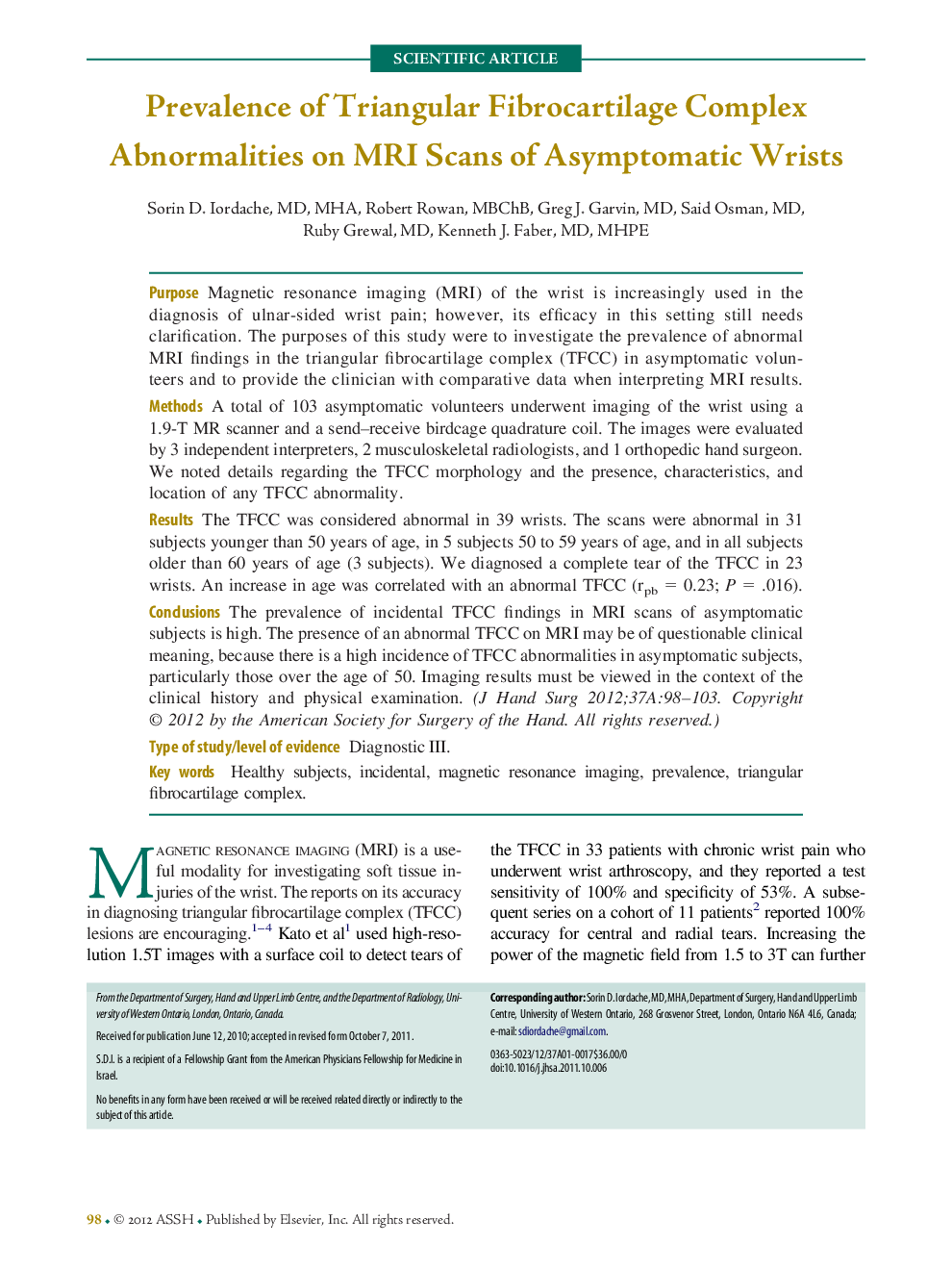| Article ID | Journal | Published Year | Pages | File Type |
|---|---|---|---|---|
| 4069627 | The Journal of Hand Surgery | 2012 | 6 Pages |
PurposeMagnetic resonance imaging (MRI) of the wrist is increasingly used in the diagnosis of ulnar-sided wrist pain; however, its efficacy in this setting still needs clarification. The purposes of this study were to investigate the prevalence of abnormal MRI findings in the triangular fibrocartilage complex (TFCC) in asymptomatic volunteers and to provide the clinician with comparative data when interpreting MRI results.MethodsA total of 103 asymptomatic volunteers underwent imaging of the wrist using a 1.9-T MR scanner and a send–receive birdcage quadrature coil. The images were evaluated by 3 independent interpreters, 2 musculoskeletal radiologists, and 1 orthopedic hand surgeon. We noted details regarding the TFCC morphology and the presence, characteristics, and location of any TFCC abnormality.ResultsThe TFCC was considered abnormal in 39 wrists. The scans were abnormal in 31 subjects younger than 50 years of age, in 5 subjects 50 to 59 years of age, and in all subjects older than 60 years of age (3 subjects). We diagnosed a complete tear of the TFCC in 23 wrists. An increase in age was correlated with an abnormal TFCC (rpb = 0.23; P = .016).ConclusionsThe prevalence of incidental TFCC findings in MRI scans of asymptomatic subjects is high. The presence of an abnormal TFCC on MRI may be of questionable clinical meaning, because there is a high incidence of TFCC abnormalities in asymptomatic subjects, particularly those over the age of 50. Imaging results must be viewed in the context of the clinical history and physical examination.Type of study/level of evidenceDiagnostic III.
